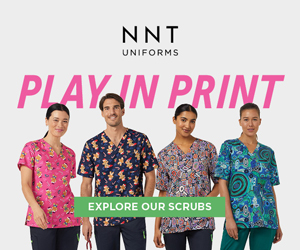Can paid employment models for undergraduate nurses improve transition to practice and help to address workforce shortages?
Supporting undergraduate nurses and new graduates to transition to the workforce is vital. The global nursing shortage was widely apparent even before the COVID-19 pandemic. The WHO estimated a shortfall of 5.9 million, necessitating 10.6 million nurses by 2030, as almost 17% of nurses are expected to retire over the next decade.1
Alarmingly, the International Council of Nurses predicts an even greater global nursing deficit of about 13 million following the COVID-19 pandemic due to nurses leaving the profession.2
Nursing workforce shortages are also exacerbated when new graduates leave the workforce or don’t find jobs. New graduates can experience feelings of unpreparedness and stress during their transition to professional practice.3,4 These issues can reduce new graduates’ job satisfaction and confidence, resulting in a high turnover rate in the first year.5 Employers can help to ensure that new nurses are supported effectively and appropriately in the workplace. To enhance graduates’ transition to practice, many healthcare providers offer transition programs, preceptorships, and workshops.4,6
Led by ANMF (Victorian Branch), the registered undergraduate student employment model was initially trialled by the Victorian Labor Government in 2016 to reduce workload pressure for registered nurses, support transition to practice, and develop a sustainable nursing workforce, and enhance the patient’s experience.7,8,9 The RUSON Employment Model has since been implemented in over 50 Victorian health services and has also led to implementation of an equivalent model for undergraduate midwifery students.
Evaluation of the RUSON Employment Model has yielded promising results. These include reducing workload pressure and increasing job satisfaction for registered nurses, improving patient care, and increasing the confidence of RUSONs in terms of providing general nursing care, teamwork, and communication.7,8
While the RUSON Employment Model is thought to support transition to practice for participants, further research is required to better understand their experiences of the model and factors within the Model which influence its successful implementation.
The lead author of this article is a nurse and current PhD student at UniSA undertaking a project to investigate transition to practice in the context of the RUSON Employment Model supervised and supported by the ANMF Federal Office and ANMF Victorian Branch. We hope interested readers will keep a lookout for opportunities to participate in this research which will be announced as they open for recruitment.
References
1 World Health Organization. State of the world’s nursing 2020: investing in education, jobs and leadership. Online: WHO. 2021, Available: https://www.who.int/publications/i/item/9789240003279 (Accessed 5 Oct 2022).
2 International Council of Nurses. International Council of Nurses Policy Brief 2021: The global nursing shortage and nurse retention. Online: ICN. Available: https://www.icn.ch/sites/default/files/inline-files/ICN%20Policy%20Brief_Nurse%20Shortage%20and%20Retention_0.pdf (Accessed 5 Oct 2022).
3 Phillips C, Kenny A, Esterman A, Smith C. Does the choice of pre-registration paid employment impact on graduate nurse transition: an Australian study. Nurse Education Today. 2014 Apr 1;34(4):532-7.
4 Cubit KA, Ryan B. Tailoring a graduate nurse program to meet the needs of our next generation nurses. Nurse Education Today. 2011 Jan 1;31(1):65-71.
5 Laschinger HK. Job and career satisfaction and turnover intentions of newly graduated nurses. Journal of Nursing Management. 2012 May;20(4):472-84.
6 Ankers MD, Barton CA, Parry YK. A phenomenological exploration of graduate nurse transition to professional practice within a transition to practice program. Collegian. 2018 Jun 1;25(3):319-25.
7 Kenny A, Dickson-Swift V, DeVecchi N, Phillips C, Hodge B, Masood Y. Evaluation of a rural undergraduate nursing student employment model. Collegian. 2021 Apr 1;28(2):197-205.
8 Mumford S, Newton M, Benzie C, Forster D, Matthews R, Hyde R, Llewelyn F, McLachlan H. Supporting the midwifery workforce: an evaluation of an undergraduate midwifery student employment model at a large tertiary maternity service in Victoria, Australia. Women and Birth. 2022 May 5 [Ahead of Print].
Authors:
Seung A (Sarah) Park PhD Candidate, University of South Australia, Clinical and Health Sciences, Rosemary Bryant AO Research Centre
Rebecca Sharp PhD, Lecturer, University of South Australia, Clinical and Health Sciences, Rosemary Bryant AO Research Centre
Professor Marion Eckert, Professor, University of South Australia, Clinical and Health Sciences, Rosemary Bryant AO Research Centre
Belinda Clark, Professional Officer, Australian Nursing and Midwifery Federation (ANMF) Victorian Branch
Micah DJ Peters PhD, Senior Research Fellow/National Policy Research Adviser, National Policy Research Unit (Federal Office), Australian Nursing and Midwifery Federation (ANMF) and University of South Australia, Clinical and Health Sciences, Rosemary Bryant AO Research Centre








